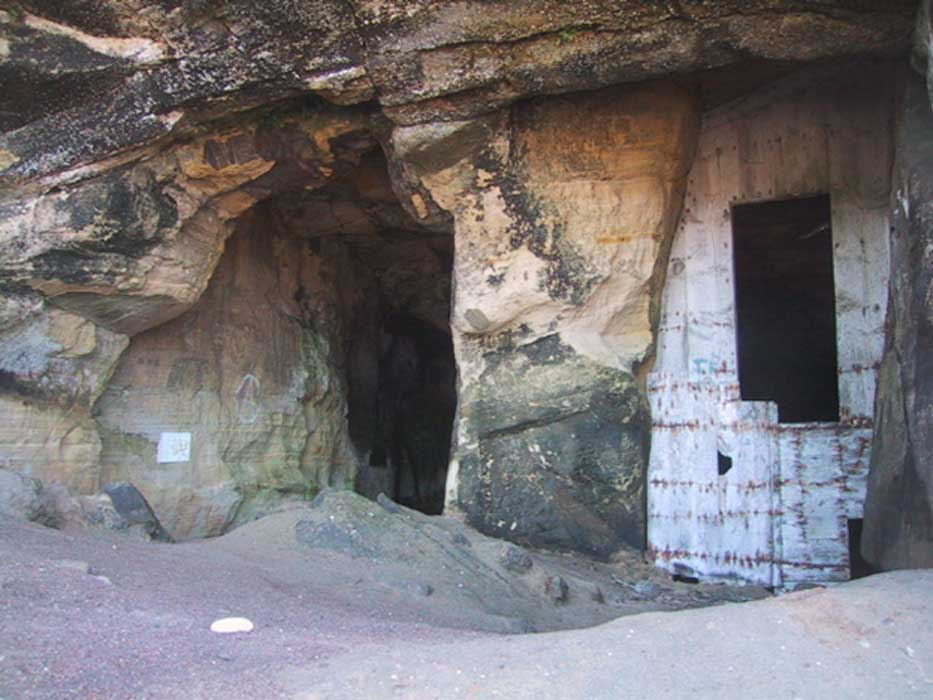What Really Went on in the Sculptor’s Cave Where Hundreds of Bronze Age Child Remains Were Unearthed?
Pictish carvings grace its walls; crucibles, a swan’s neck pin, and bronze arm rings were scattered across its floor – Sculptor’s Cave has had an exciting and varied history stretching back to the Late Bronze Age. But it is perhaps best known for the shocking discovery of hundreds of child remains with many showing signs of decapitation. What really went on in the Sculptor’s Cave?
Sculptor’s Cave is an archaeological site situated in Covesea, in the northeastern Scottish council area of Moray. Based on the archaeological finds that have been made at the cave, it may be said that Sculptor’s Cave was used by the inhabitants of the area (and perhaps even from further afield) from as early as the Late Bronze Age. The presence of Pictish carvings on the walls of the cave also suggests that the site was in use up until the Early Medieval period. The archaeological evidence also indicates that Sculptor’s Cave was utilized primarily for funerary and ritual purposes. Most recently, Sculptor’s Cave has been ‘explored’ digitally, which would allow further research, especially regarding the Pictish carvings, to be conducted on the site, ‘preserve’ it for future generations, and bring it to a wider audience.
- Fingal’s Cave: A Spectacular Sea Cave of Irish Legends and Modern Inspiration
- Shelters from the Storm: More Ancient Buddhist Caves Found in Mumbai
- Expedition to Tayos Caves: Never Before Seen Photographs Shed Light on Mysterious Underground Network

Sculptor’s Cave. (mynewsdesk)
Archaeological Excavations in Sculptor’s Cave
Sculptor’s Cave is located in a small bay at the base of impressive cliffs where the Moray Firth and the North Sea meet. Archaeological excavations of this site have been carried out from as early as 1928. Further research and documentation of the cave, including archaeological excavations and field visits by the Ordnance Survey (as part of the Ordnance Survey Archaeological Division Revision Programme) were carried out over the following decades. The continuous scholarly research on Sculptor’s Cave has shed some light on this ancient site and enhanced our understanding of it.
For a start, numerous artifacts from different periods of the cave’s use have been found within Sculptor’s Cave. For example, in the layers corresponding to the Iron Age, archaeologists have found many fragments of crucibles, slag, ironwork, and even a possible furnace base. These objects suggest that metallurgical work was being done in the cave during that time. On the other hand, artifacts from the cave belonging to the Late Bronze Age include pottery, worked bone, a swan’s neck pin, and several bronze arm rings. It has been hypothesized that during this period, Sculptor’s Cave was used as a repository for precious objects.
A Final Resting Place
Apart from artifacts, a large quantity of human remains has also been collected from the Late Bronze Age layers. It has been determined that the majority of these remains belonged to children. These dead children were brought to Sculptor’s Cave from various parts of northern Scotland, the islands off the coast, and even possibly from Ireland. This may be an indication that Sculptor’s Cave had a particular ritual significance for the people of the area during the Late Bronze Age. There is also evidence that some of the dead children were decapitated, and their heads perhaps placed on poles to be displayed at the entrance of the cave. The bones do not necessarily suggest that ritual killing was involved, it appears that it was, strange as it may seem to a modern viewer, merely a part of the mourning process of that society.

A human second cervical (axis) vertebra HM-159, showing the cut-marks consistent with decapitation. (PAST)
Pictish Cave Carvings
Sculptor’s Cave is also important due to its Pictish carvings. These may be found on the walls of the cave’s entrance passages. Until recently, it was difficult to study these carvings in detail. One of the reasons being that Sculptor’s Cave is only accessible during low tide, which means that researchers have only a limited of time to study them each time they are able to enter the cave. This changed in 2017, when archaeologists from the University of Bradford created a digital model of Sculptor’s Cave. This means that the cave could now be accessed virtually, independent of the tides.
- God or the Devil? Whose Mystical Eyes Follow Visitors through the Bulgarian Prohodna Cave?
- Balankanché Cavern: Underground World Tree Reveals Secrets of Sacred Maya Beliefs
- The Obscure Mangiapane Cave in Sicily: Prehistoric Cave and Site of Modern Feasts
Apart from aiding archaeological research, the digitalization of Sculptor’s Cave could also serve to preserve the site for future generations. On top of that, the public will also be able to ‘explore’ this interesting site, and, by doing so, learn more about it and the people who used it. This raising of public awareness and dissemination of information may be vital for the future of this ancient site and the future of archaeology in general.

Pictish carvings in Sculptor’s Cave. (Aberdeenshire Council)
Top image: Sculptor’s Cave, Covesea, Lossiemouth. (Ken Ross/CC BY SA 2.0)
By Wu Mingren
References
Armit, I. & Schulting, R., 2007. An Iron Age Decapitation From The Sculptor’s Cave, Covesea, Northeast Scotland. [Online]
Available at: https://www.le.ac.uk/has/ps/past/past55/past55.html#Covesea
Current Archaeology, 2017. Digital exploration of the Sculptor’s Cave. [Online]
Available at: https://www.archaeology.co.uk/articles/digital-exploration-sculptors-cave.htm
Historic Environment Scotland, 2017. Sculptor's Cave, Covesea. [Online]
Available at: https://canmore.org.uk/site/16278/sculptors-cave-covesea
Scottish Archaeological Research Framework, 2017. Case Study: Sculptor’s cave, Covesea. [Online]
Available at: http://www.scottishheritagehub.com/content/case-study-sculptor%E2%80%99s-cave-covesea
Society of Antiquaries of Scotland, 2017. The Covesea Caves Project. [Online]
Available at: https://www.socantscot.org/research-project/the-covesea-caves-project/
The BBC, 2007. Old cave for child remains reborn. [Online]
Available at: http://news.bbc.co.uk/2/hi/uk_news/scotland/north_east/6252605.stm
University of Bradford, 2017. Old meets new as prehistoric cave is digitised. [Online]
Available at: https://www.bradford.ac.uk/news/2017/sculptors-cave-video.php

















